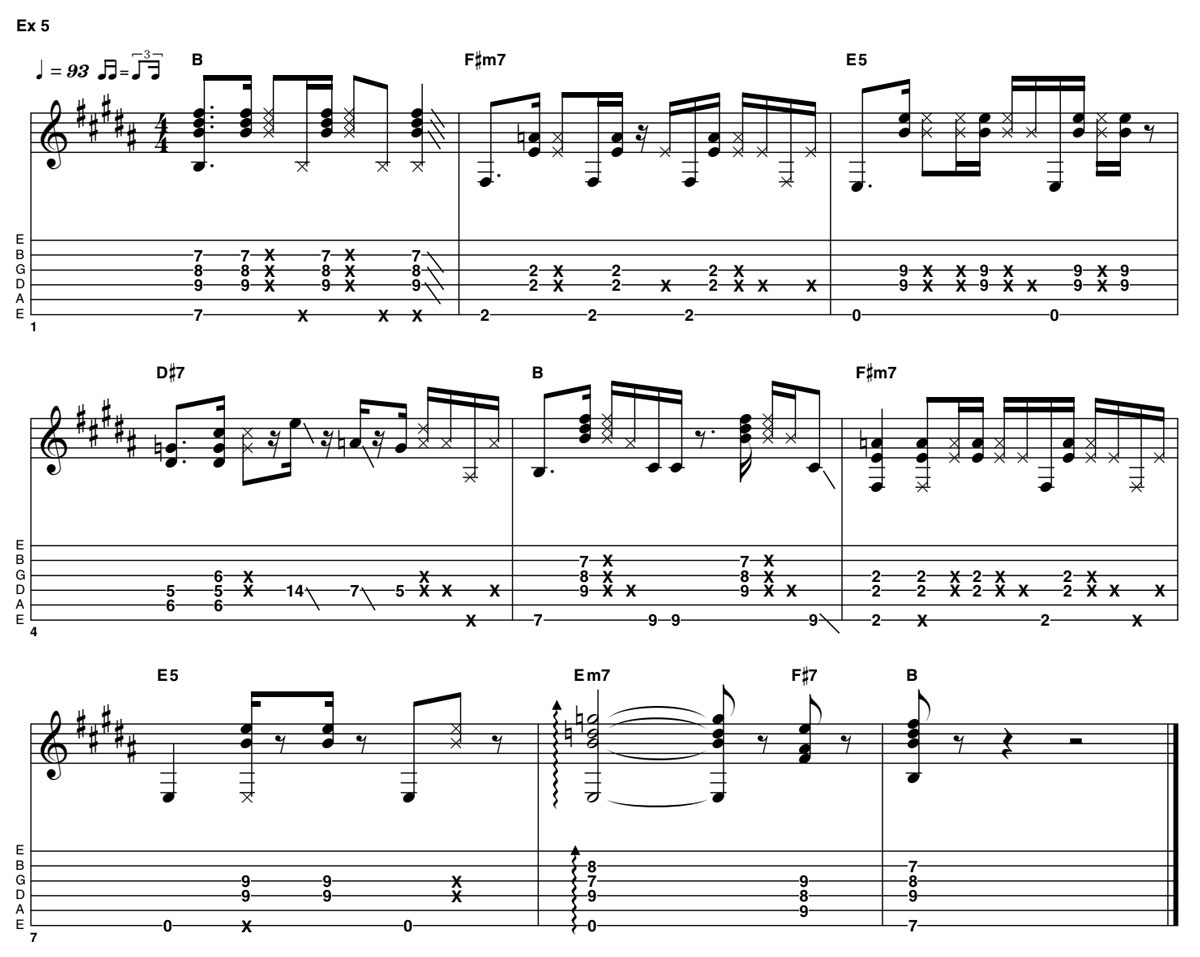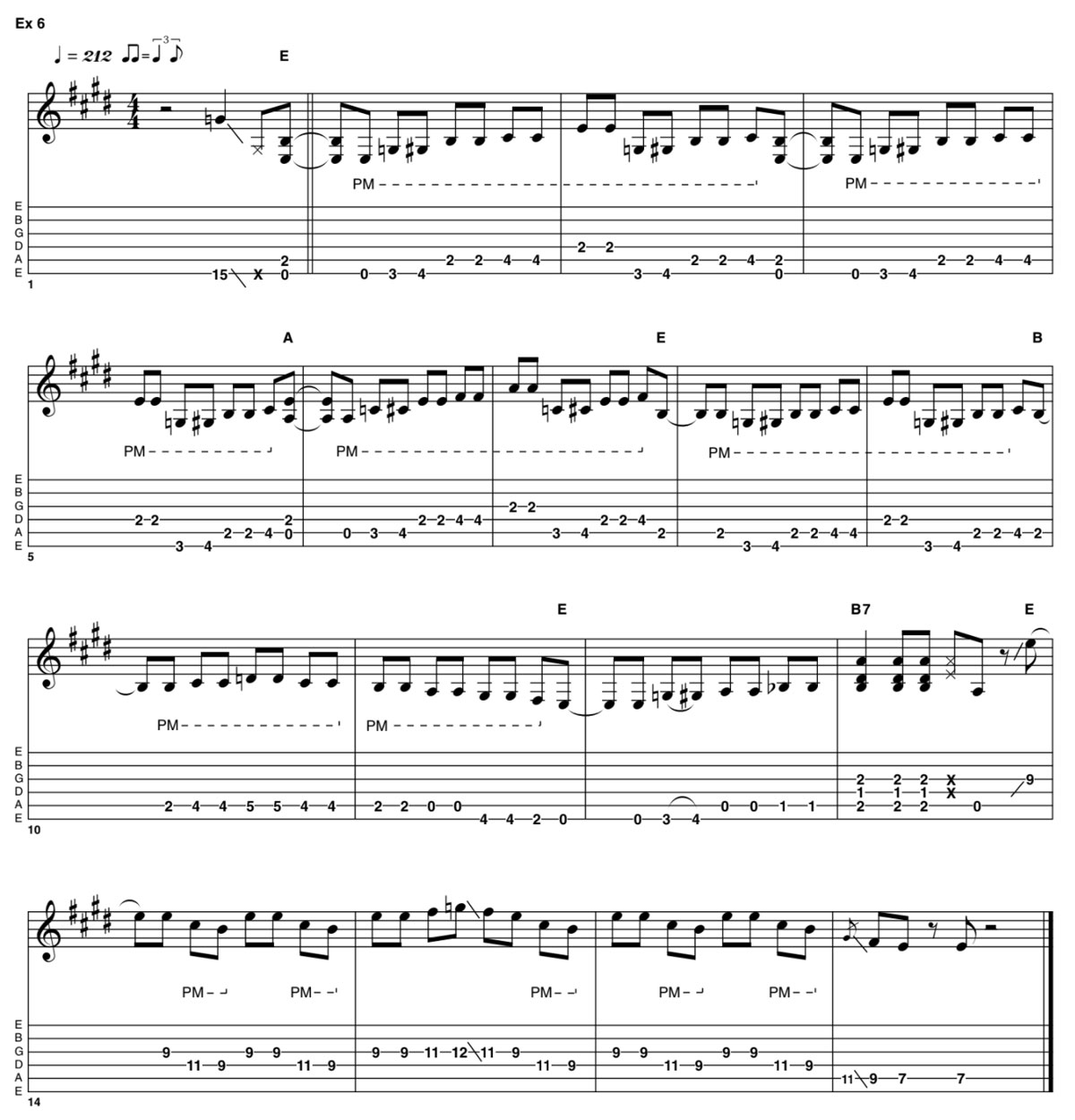Test your blues chops with these dynamic licks from Tora Dahle Aagård
Get to know the Norwegian six-stringer's unique interpretation of the genre
“Blues is blues,” says Tora Dahle Aagård in our interview, and while that opens one of the biggest cans of worms in music history, she’s got a point. We can all learn something from the many strands of blues, whether it’s the rawest Delta slide playing or the hippest New York fusion.
Every generation adds a novel slant to what has gone before, so let’s learn some new takes on classic licks from this expressive Norwegian guitar-slinger...
Example 1. Playing through changes
There's something very satisfying about finding a symmetrical pattern that works across chord changes.
Tora’s use of approach notes here is interesting: she uses the minor 3rd (G over E major) on two different strings, first to target the major 3rd (G#) and then to target the 9th (F#). The pattern then repeats for the D major chord.
Example 2. Fingerstyle flair
This is a simple classic line built around A minor pentatonic (A C D E G) including the b5th ‘blue note’ (Eb) and adding the major 3rd (C#) to resolve to the usual Mixolydian tonality of blues. Most importantly, though, Tora’s bare-fingers approach gives her lots of funky dynamic control. It’s all about those muted ghost notes!
Example 3. Slip slidin' away
This is a graceful bending lick, using slides to smoothly link multiple bends.You really need to be confident of your intonation here, so work slowly at first, listening carefully to each bend in isolation and checking the pitch against the ‘normal’ fretted version of the note.
Example 4. Triads rule...
Although Tora would probably play this lick in a bluesy context, it’ll work in lots of styles. We’re basically outlining an A major triad (A C# E), with a couple of extra notes added from the Mixolydian scale (A B C# D E F# G). The C note near the end adds a touch of bluesy major/minor tension.
All the latest guitar news, interviews, lessons, reviews, deals and more, direct to your inbox!
Example 5. Rockin' in rhythm
Don't be put off by the apparent complexity of the tab! Most of those muted notes (the X note-heads) are infinitely variable. Listen for the strongest sound in each bar: it’s usually beat 1 and then the fourth 16th note of beats 1, 2 and 3. Bar 2 is the perfect illustration of this.
Example 6. Texas hold 'em
There's a strong Texan blues vibe here! The key to this line is varying the dynamics and also the palm muting. Every other bar, there’s a ‘push’, which you need to hit harder, and briefly release the palm muting. Listen to how Tora plays it and then try to copy her phrasing. The second part is a little E major pentatonic (E F# G# B C#) phrase.






